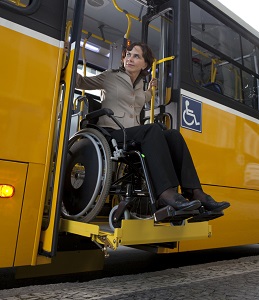Americans with Disabilities Act
 The Americans with Disabilities Act (ADA) is a federal law designed to protect the rights of disabled people in housing, employment, education, government contracts, and a host of other pursuits.
The Americans with Disabilities Act (ADA) is a federal law designed to protect the rights of disabled people in housing, employment, education, government contracts, and a host of other pursuits.
What is the ADA?
The Americans with Disabilities Act was signed into law in 1990. Because it is a federal law, its mandates apply in all states. However, states can establish additional protections above and beyond the protections of the ADA. The primary effect of the ADA is that it prohibits disability discrimination and makes disabled people members of a protected class. The ADA does not give a specific list of conditions that count as disabilities, but certain mental health conditions are covered under the ADA. Instead, to qualify for protection, a disability must interfere with a “major life activity” or a person must be widely regarded as disabled. For example, a person in a wheelchair might be protected because he or she is widely regarded as disabled, and a person with diagnosed anxiety could be protected because his or her anxiety was so significant that it interfered with his or her ability to function without assistance on a daily basis.
Rights Under the ADA
The ADA bans disability discrimination and allows people with disabilities to sue and recover both damages and attorney’s fees if their rights are violated. A person’s disability cannot be used in making decisions about whether or not to hire him or her or allow him or her to attend school, and the ADA establishes certain rights that further expand on what constitutes disability discrimination.
Examples of rights under the ADA include:
- The right to be free of employment and housing discrimination.
- The requirement that employers and educational institutions make “reasonable accommodations” to enable disabled people to work or attend school. These accommodations cannot interfere with the fundamental nature of the job or schoolwork, and might include accommodations such as allowing a student to use a note-taker or allowing a blind person to use different computer software.
- The mandate that newly-built public facilities must meet certain accessibility standards that enable people with disabilities to use the facilities
Reference:
- A guide to disability rights laws. (n.d.). U.S. Department of Justice. Retrieved from http://www.ada.gov/cguide.htm
Last Updated: 08-4-2015